-
-
-
09-26-2012 07:34 AM
# ADS
Friends and Sponsors

-
Legacy Member

Muffet:
That's interesting about your Lithgow No4 barrels.
No4 barrels.
So, there must have been two versions of the .303 No4 barrel produced at Lithgow. The drawing I have is Issue 8, and has notes referring to alterations to the bullet leede to be incorporated in all production AFTER 15 March 1965. Not having the earlier editions, I can't compare the leede dimensions, but I suspect that they shortened the throat from the old SMLE chamber spec. Remember that SMLEs, (at least at Lithgow),were throated to work with both Mk6 and Mk7 bullets. A shorter throat and different ramp angle would probably work better with the Mk7 bullet.
Just to be sure, I'll compare the chamber dimensions on my late-edition No4 barrel drawing with those on the 1920 and 1938 SMLE barrel drawings; could be interesting. While I'm at it, comparison of a "standard" SMLE chamber and one in an "H" barrel could be interesting.
This is real "Anorak stuff" as our English cousins would say.
Does anyone have the drawings from Savage or Long Branch?
To the Bat-Cave, Robin!!
-
-
Not only is it anorack stuff as the poms would say but what about the Army expression of '........mission creep' too?
-
-
FREE MEMBER
NO Posting or PM's Allowed

The rifle is resting comfortably in my armory, 40 rounds later. The gap has not grown any and the spent brass is just fine. Obviously the armorers knew what they were doing when they built and rebuilt this rifle all these decades ago. I appreciate all the help, even if my wife does not. 
-
Legacy Member

Gap between barrel and receiver
I'm glad despite all the bullsh....er....manure you got the rifle. I look forward to seeing the pictures.
-
-
Since Theodore has a fine new rifle without dramas, it seems like a good time to explore this matter further in a general way.
I was able to round up a few loose actions, most of which haven't been touched since the barrels were removed. Almost all of these show signs of a gap at the front of the action body. One had good contact between the knox form face and the action front.
But what may be shocking to some of you is that several actions had no contact on either face! In fact some have quite the build up of crud on both faces indicating neither shoulder was responsible for retaining the barrel. Muffet.2008 has already commented in passing on the reason how this situation could occur. In fact, it makes perfect sense to me, providing a certain circumstance exists during barrel manufacture. Especially in a high production environment. (It also explains why many SMLE barrels are comparatively easy to unbreech, especially compared to No.4s.)
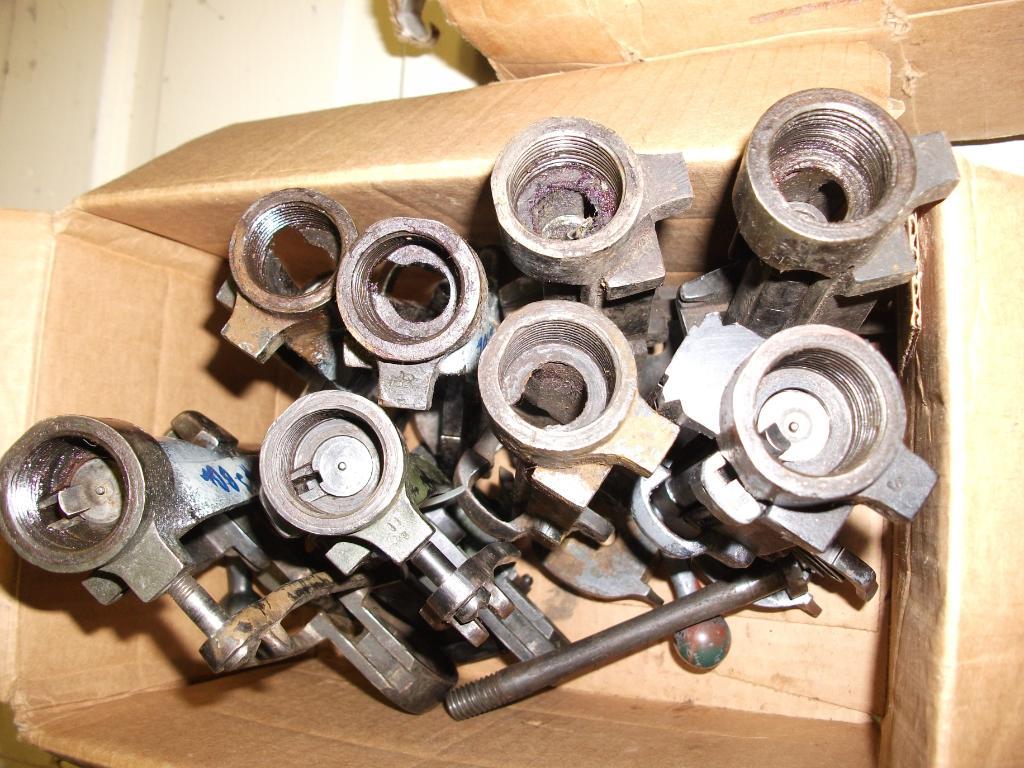
Some surviving actions. Quite a few were scrapped. These had bad barrels.
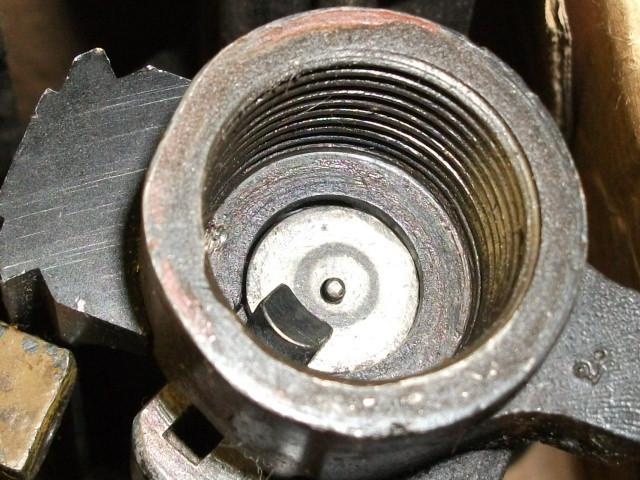
Here's a Bubba Special, now rendered down for it's last possibly useful assembly- IF a scoped action is needed. Note the lack of contact on both the front and rear faces after some clean up. Its matching barrel was easily removed.
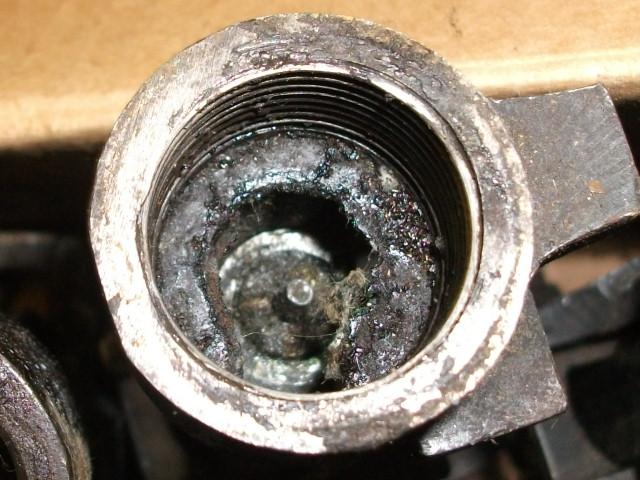
Definitely no contact on the rear face! Thick gunk build up remains.
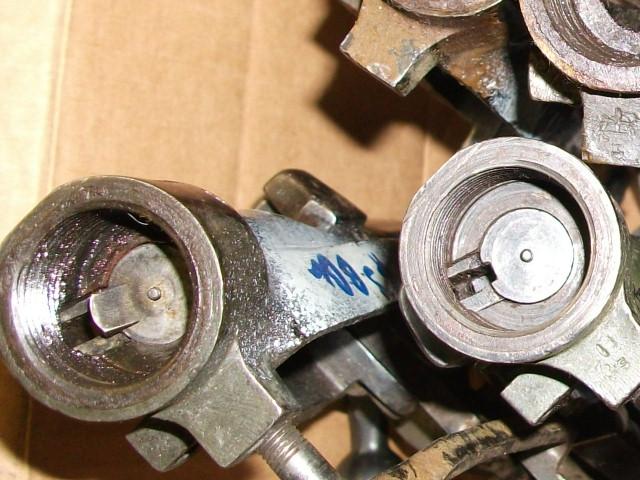
This action on the lower right is quite nice. But the barrel was shot out to a point that it's rifling was very rounded. The throat was washed out and the muzzle? I think it wasn't bad. Hopefully it's still about.
At any rate, it had contact on both the front and rear face. Barrel removal wasn't easy on this example. It's supposed to be a DeLisle project...
I had to cut a few actions that had this double contact when they just would not unscrew. The barrels were good, but the actions had problems.- Including one which had a small opening on the left side, exposing the LH locking lug. A couple were twisted so badly a bolt would not traverse.
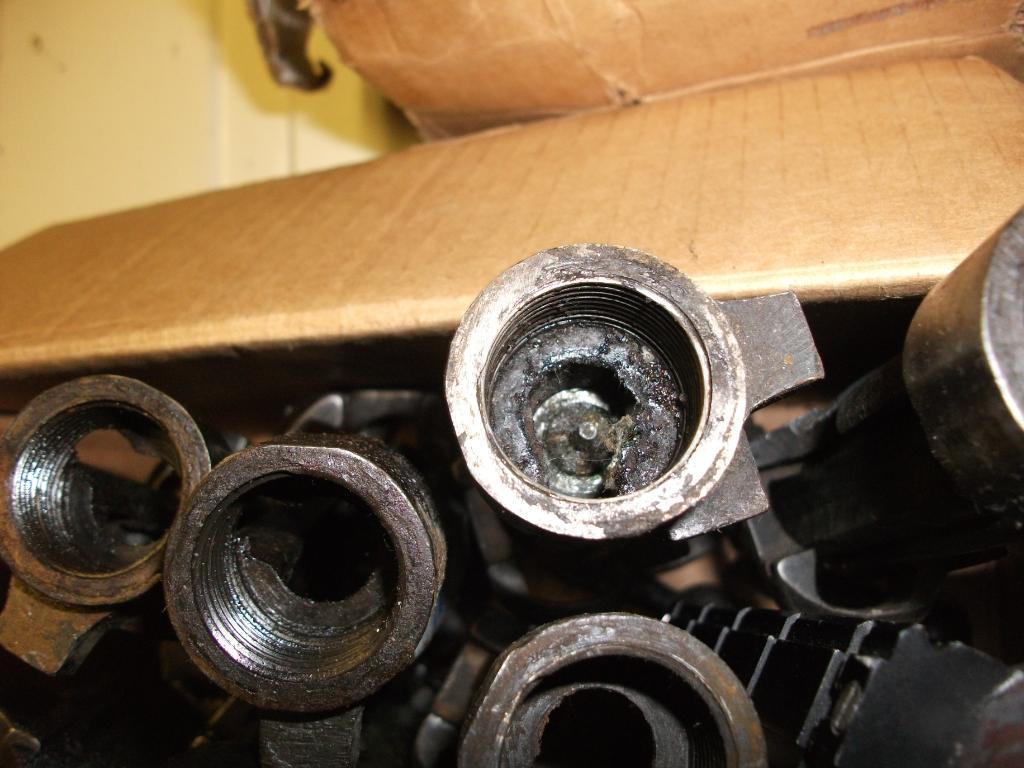
A few more. I'm beginning to see why the subject doesn't come up more often. Even a 0.010" gap would be almost impossible to detect after all the dried dirt and oil filled the recess fairly permanently! It survived unbreeching and years of rattling around in boxes, etc.
-
The Following 3 Members Say Thank You to jmoore For This Useful Post:
-
Legacy Member

I've been wondering (since this topic came up) what issues, if any, there would be if a barrel was fitted without contact either end but was firmly in place & headspace was good??
-
-
-
Thank You to Son For This Useful Post:
-
I've been pondering the same too 5th Batt, especially after pondering the actions in JM's MOST interesting photos and observations. To be honest, if the threads don't lock by virtue of a stop surface (or other locking mechanism), then they'll be free to rotate, held only by friction. This would never be acceptable on a barrel due to the rotational forces applied by the bullet in the rifled bore - whether it's trying to loosen or tighten the barrel as it starts its journey. Just think of the barrel as a 1/2" UNF bolt in a nut for example...........
I'd have to say that if the barrel wasn't breeched up against a stop face, then you might well get CHS and it might well be tight but it wouldn't ever be tourque reading tight and therefore, technically, it'd be loose and as sure as god made little green apples, with the constant expansion and contraction (by heat and load) it'd work loose. That's just my thoughts, thinking on my feet as they say. Good question!
And here's another thing......... If the No1 barrel is breeched up at the end of the barrel face hard against the inside face of the breeching-up ring of the body, then what earthly use is the gas escape hole in the left side of the body? If it is to allow any residue of gas to escape (from a pierced primer for example or.....) then it must be a frill, if not a complete fraud if the barrel is breeched up hard against the body because there would be no passage available for any gas to escape - let alone bleed through the gas vent.
Can you get a close up photo of that configuration JM? Thanks
Last edited by Peter Laidler; 09-28-2012 at 04:12 AM.
-
-
Advisory Panel


Peter, to save waking JM up, maybe a pic from my high tech photographic studio could provide the answer.... I wasn't sure of the inside view of this either, but now know the vent holes actually go through behind the thread, in the thicker part of the receiver ring around the bolt face.
Attachment 37085
-
The Following 3 Members Say Thank You to Son For This Useful Post:
No.4 barrels.......and they have the bayonet lugs.
















 PM
PM

















